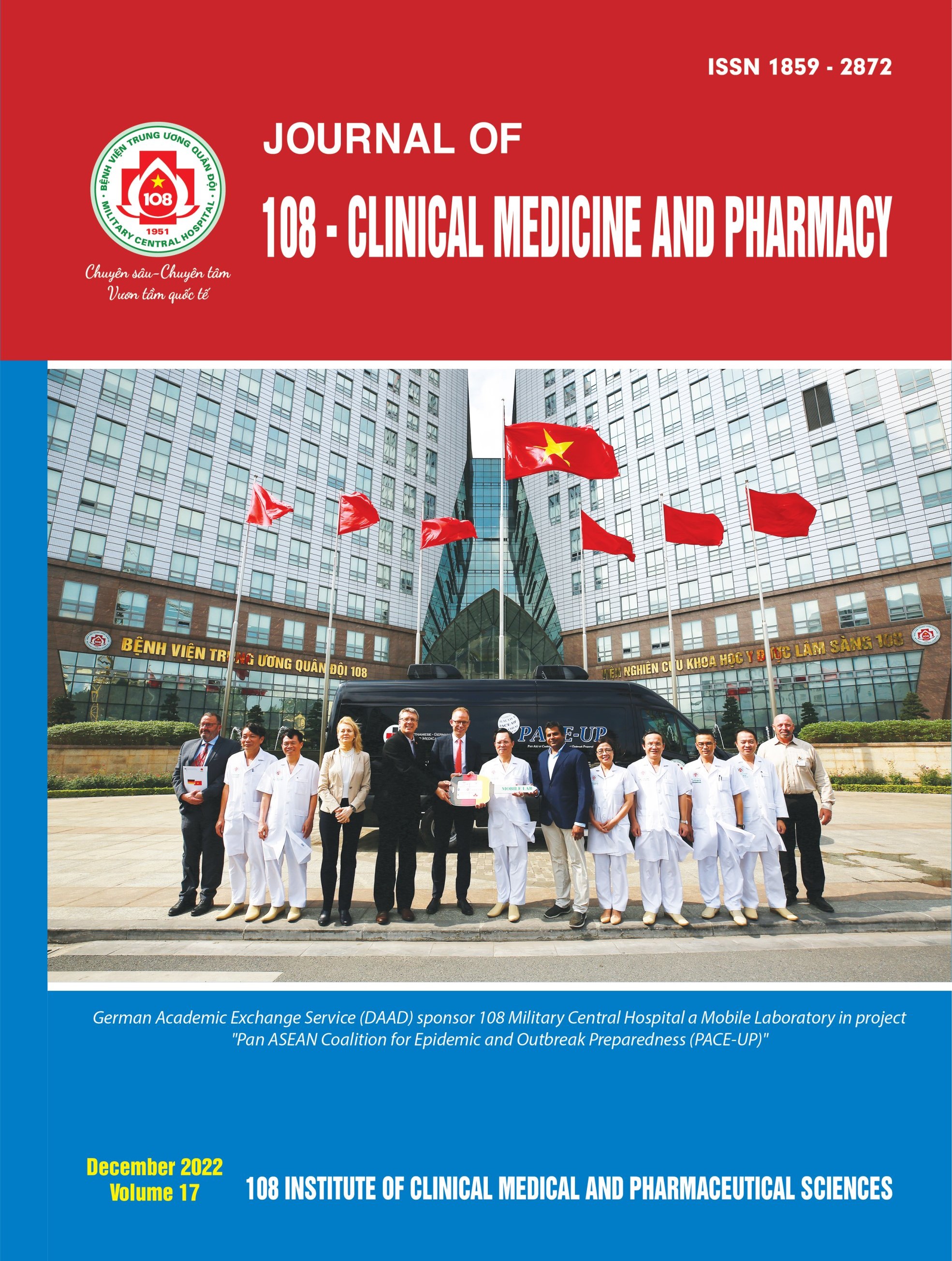Results of risk stratification and accessory pathway ablation in patients with asymptomatic Wolf-Parkinson-White pattern at 108 Military Central Hospital
Main Article Content
Keywords
Abstract
Objective: To evaluate the electrophysiological characteristics, risk stratification and ablation outcomes in patients with asymptomatic Wolf-Parkinson-White pattern at 108 Military Central Hospital. Subject and method: A retrospective observational study on 45 asymptomatic Wolf-Parkinson-White patients underwent electrophysiology study and ablation by radiofrequency energy at Department of Cardiology, 108 Military Central Hospital, from December 2018 to December 2021. All patients were evaluated by electrophysiology study to stratify the risks. Indications of ablation was according to European Society of Cardiology guideline. Result: The average age of patients was 34.8 ± 15.1 years old. Majority of patients were men with the rate of 82.2%. The proportion of patients at high clinical risk was 31.1%. In electrophysiology study, the mean accessory pathway effective refractory period (APERP) was 215.5 ± 60.1 (in which 73.3% patients had APERP ≤ 240ms). Among patients with having spontaneous/ induced atrial fibrillation (22.2%), the mean shortest pre-excited R-R interval in atrial fibrillation (SPERRI) was 232 ± 81.2ms (80% of patients had SPERRI ≤ 250ms). The rate of patients with inducible atrioventricular reentrant tachycardia was 22.2%. There were 43 patients (95.55%) having indication for ablation (4.44% due to high-risk occupation and 91.11% due to high risk by electrophysiological study). The locations of accessory pathways included: 53.4% from left side (the most common region was anterior wall of mitral valve with 18.6%) and 46.6% from right side (14% from posterolateral wall of tricuspid valve). The mean number of attempt ablations before success was 3.1 times. The rate of successful ablation was 97.6%. There were no complications in our study sample. Conclusion: Among 45 patients with asymptomatic Wolf-Parkinson-White pattern, there were 95.55% patients having indication for ablation (4.44% due to high-risk occupation and 91.11% due to high risk by electrophysiological study). The locations of accessory pathways included: 53.4% from left side (18.6% from anterior wall of mitral valve) and 46.6% from right side (14% from posterolateral wall of tricuspid valve). The rate of successful ablation was 97.6%.
Article Details
References
2. Brugada J and Keegan R (2018) Asymptomatic ventricular pre-excitation: Between sudden cardiac death and catheter ablation. Arrhythm Electrophysiol Rev 7(1): 32-38.
3. Pappone C, Vicedomini G, Manguso F, Saviano M, Baldi M, Pappone A, Ciaccio C, Giannelli L, Ionescu B, Petretta A, Vitale R, Cuko A, Calovic Z, Fundaliotis A, Moscatiello M, Tavazzi L, Santinelli V (2014) Wolff-Parkinson-White syndrome in the era of catheter ablation: Insights from a registry study of 2169 patients. Circulation 130(10): 811-819.
4. Timmermans C, Smeets JL, Rodriguez LM, Vrouchos G, van den Dool A, Wellens HJ (1995) Aborted sudden death in the Wolff-Parkinson-White syndrome. Am J Cardiol 76(7): 492-494.
5. Montoya PT, Brugada P, Smeets J, Talajic M, Della Bella P, Lezaun R, vd Dool A, Wellens HJ, Bayés de Luna A, Oter R, et al (1991) Ventricular fibrillation in the Wolff-Parkinson-White syndrome. Eur Heart J 12(2): 144-150.
6. Obeyesekere MN, Leong-Sit P, Massel D, Manlucu J, Modi S, Krahn AD, Skanes AC, Yee R, Gula LJ, Klein GJ (2012) Risk of arrhythmia and sudden death in patients with asymptomatic preexcitation: A meta-analysis. Circulation 125(19): 2308-2315.
7. De Ponti R, Marazzi R, Doni LA, Cremona V, Marazzato J, Salerno-Uriarte JA (2015) Invasive electrophysiological evaluation and ablation in patients with asymptomatic ventricular pre-excitation persistent at exercise stress test. Europace 17(6): 946-952.
8. Mohan S and Balaji S (2019) Management of asymptomatic ventricular preexcitation. Indian Pacing Electrophysiol J 19(6): 232-239.
 ISSN: 1859 - 2872
ISSN: 1859 - 2872
